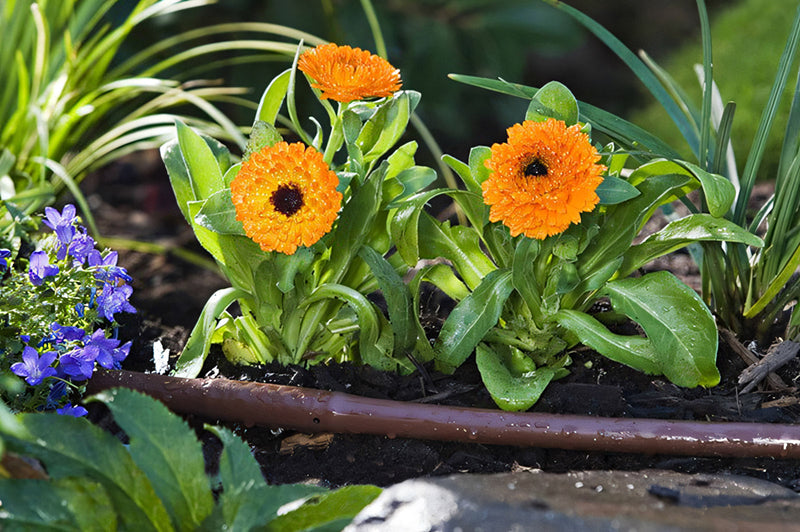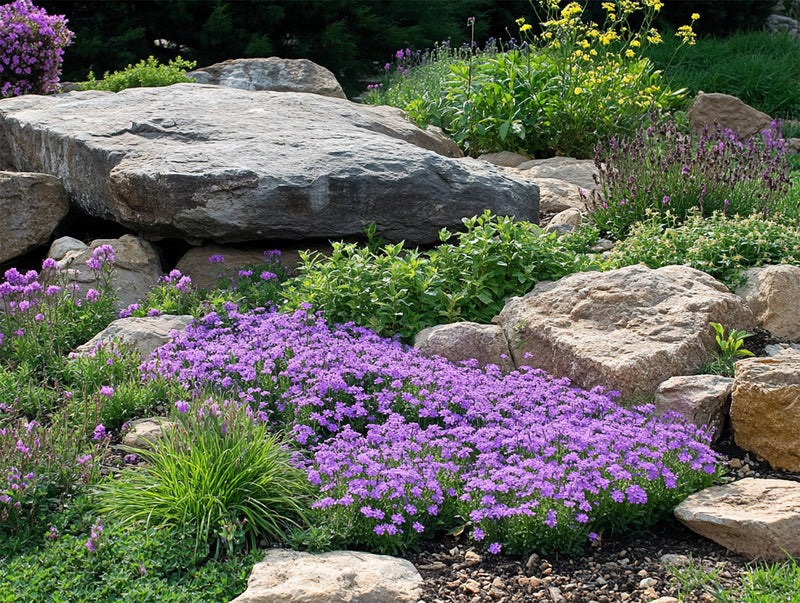

Make a Garden Feature with Ground Cover Plants
Have you ever considered using ground cover plants in your garden? Perhaps you've read our popular article on everything you need to know about ground cover plants and want to incorporate them into a design statement. Either way, we've got you covered (see what we did there?) with these tips to make an impressive garden feature using ground cover plants.
Using Ground Cover Plants as a Feature
Sometimes ground covers are used to cover hard-to-grow areas in your garden, by filling a space that looks after itself. However, they can also be used to make a bold feature statement.
When you first plant any ground cover plant, consider if you want to let them fill a space, or if you want to keep them pruned regularly so that they remain dense and contained. They can even be gradually shaped into domes or clouds, or any other shape you fancy.
Imagine having a birds-eye view of your garden or driveway. Would you consider a chequerboard pattern with low growing ground cover plants or shrubs? For example, try to picture a grid pattern with two contrasting (or similar) colour plants – one on the east-west axis and one on the north-south axis. At each cross point, choose one plant as the feature.

Creating Patterns with Ground Cover Plants
Another way to experiment with ground cover plants is to imagine a serpent or creek meandering along a section of your garden. Create a swirl or drift of the same variety or colour. Repeat with other varieties in a similar swirl, but change the pattern to make it appear more random.
Choose your favourite ground covers for best effect, or create bold drifts of several different types of plant For example, you could use deep burgundy coloured foliage with silver or blue.

Pairing Ground Cover Plants with Feature Trees
Another pattern to try is a feature tree, large shrub or sculpture as the centrepiece. Then you can have bold ground cover plantings in circles, stripes or any geometric shape to fill the space around it. Plant close together to make it dramatic, almost like a carpet.
If you're stuck for design ideas, check out different foliage types to see what colours and textures inspire you.

Money Saving Tips
Planting ground covers over a large area can get expensive. Some common plants, such as Echeverias (Chalk Sticks) or Stachys (Lambs Ears), can be easily propagated within a year to extend the area.
Sedums are also very hardy, sculptural ground cover plants that come in a variety of colours, leaf and plant sizes.
Many of these perennial style plants can be divided to create many more plants to spread around.
Water Saving Tips
To use less water in your ground cover feature, use a mix of native plants or tough plants from a similar climate zone.
Most plants benefit from regular tip pruning to keep them dense and vigorous – and you can produce even more shoots and flowers from the cut stem.

Choosing Colourful Ground Cover Plants
Some colourful flowering ground covers worth trying are Scabiosa, Scaevola, Brachycome and Nepeta. These all have blue, purple or mauve flowers that bloom over a long period.
For bright colours, the new varieties of Osteospermum offer quick growth and hardiness.
If you like warm colours, Lotus comes with orange or red pea-shaped flowers. They thrive in full sun to light partial shade, and feature attractive fern-like foliage in silvery blue.
In warmer frost-free areas, Rhoeo and Tradescantia have beautiful statement foliage and are perfect for wide borders.

Pope's DIY Tip
Use Drip Eze to reduce run-off – then simply slow or stop watering once the ground cover plants are established.
